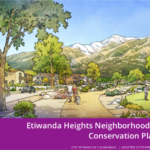CNU’s Project for Code Reform: when a new form-based code isn’t in the cards
In September 2018, the Congress for New Urbanism published “The Users Guide to Code Reform” – the product of a two-year effort working with Michigan communities to develop tools that municipalities can use to reform their zoning codes to enable better quality develop. Susan Henderson and Matt Lambert – two of the coding and design professionals who served as primary authors on the project – describe how the publication was developed and it’s intended applications.
The Project for Code Reform(PCR) is one of the most important efforts we’ve had the privilege of contributing to in the last decade. We’ve spent most of our professional efforts crafting Form-Based Codes (FBC) for local governments, and while we still feel that is the zoning gold standard for placemaking, we realize FBCs are not accessible to many communities for reasons of capacity — either staff or political. When you consider the 42,000 units of local government with zoning responsibilities in the US, and the vast majority with limited budgets and staff, the issue becomes how to more broadly deploy zoning reform.
In 2016, the Congress for New Urbanism initiated the Project for Code Reform (PCR) to develop new tools to enable a broader range of local governments to take ownership of their zoning reform. The partnership with the State of Michigan (including the Michigan Municipal League and the Michigan Economic Development Corporation) provided an opportunity to craft a solution for a specific context. A number of Michigan localities with greater capacity have already implemented form-based codes. Simpler tools for lower capacity situations are the missing piece, so solutions were scaled to the capacity of the local government to deal with the complexity of the reforms.
The product is a usable tool for local government staff and elected officials, as well as planning consultants who work for municipalities. While created for Michigan townships, villages, and small cities, the code reform principles and techniques can be applied to communities throughout the US.
The Users’ Guide to Zoning Reformis composed of two pieces — one which allows a local government to solve for discrete, specific problems, and the second which provides a set of basic zoning district templates for common walkable place types within the state. If a planning director is building the case for reform with their elected officials, the first tool is the initial step. The Guide offers background on zoning reform, instructions and process, and a series of code reform steps addressing streetscape, form, use, frontage, and parking.
Mary Madden of Ferrell Madden, one of the primary authors, identified the importance of “knowing where you are” when you begin to solve for zoning problems. Some problems are very specific to main streets or downtowns, while others are unique to the neighborhood. The concepts of Place Types is built into the Guide, targeting the code reform steps as well as helping local government understand and orient policy around the character of place. The process for using the Guide is to first determine where you are, then assess local support and capacity, and finally select solutions based upon a combination of the first two criteria.
For those with political support and staff capacity, there are model districts that can be combined to create many solutions for municipalities of different sizes. The Resources section includes instructions on how to map the model districts relative to place type. The model districts were crafted to apply to a simple main street by itself, a main street plus adjacent urban neighborhoods, or a complete downtown with adjacent urban neighborhoods. These districts are not examples of FBCs but are urban in character and simple in structure. It would be easy enough to add illustrations if a local government has the capacity; but our goal was to develop districts that could be introduced as simple text amendments. The model districts are written permit good development but not necessarily guarantee it. They are very straightforward in structure and simplified to reflect common zoning practices – intent, use, lots and yards, simple site development, parking, height, signs, and building standards. Landscaping and open space were deliberately omitted in order to make implementation as simple as possible.
The Guide leads users through the code reform process and provides tools for local governments who may lack the capacity to develop a form-based code. Through many discussions in the PCR process, the authors agreed that not every community needs a full FBC. Given the time and resources required for zoning reform, we felt that the prudent approach is to eliminate barriers to desirable development first. The door remains open for FBCs, but learning from the Lean Urbanism Movement, it is the barriers to good development that most degrade our cities and towns. The Guide provides a path to remove barriers and enact the minimal standards necessary to promote thriving downtowns, main streets, and adjacent neighborhoods.
Susan Henderson is principal and director of design at PlaceMakers, LLC, a planning, coding and implementation firm. She is a board member of the Congress for the New Urbanism and serves on the Steering Committee of the Form-Based Code Institute.
Matthew Lambert is a partner with DPZ CoDESIGN in Miami, Florida. He is a board member of the Congress for the New Urbanism.














